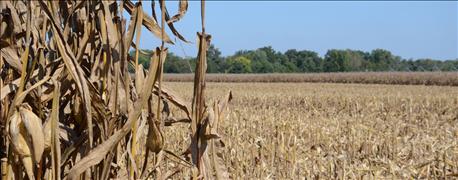
USDA began issuing safety net payments due to the downturn in 2015 crop year prices in October 2016. You may have been one of the 1.7 million farms nationwide enrolled in either the Agricultural Risk Coverage or Price Loss Coverage program. These programs were instituted as part of the latest farm bill passed by Congress.
Secretary of Agriculture Tom Vilsack notes that more than $7 billion in payments would be made to farmers under these programs for the 2015 crop year. USDA projects that these payments will account for over 10% of net farm income nationally for 2016.

JUST A BAND-AID? Ag economists believe government payments issued due to lower prices in 2015 won’t erase a significant amount of red ink on 2017 crop budgets.
Perhaps you’ve already received your payment. Which program are most people enrolled in here in Indiana? How much will the extra revenue help on crop budgets with still-depressed prices? What can you expect in terms of government payments under these programs over the next couple of years while they remain in effect?
Indiana Prairie Farmer posed these types of questions to Michael Langemeier, associate director of the Purdue University Center for Commercial Agriculture. He’s also an Extension ag economist. Here are his responses.
IPF: Which program are most Indiana farmers enrolled in?
Langemeier: Most producers in Indiana selected the ARC-County program. (According to USDA, 96% of soybean base acres nationwide and 92% of corn base acres are in the ARC-County coverage option.)
IPF: On an average Indiana farm enrolled in ARC-County, how much will the average payment be for the 2015 crop year?
Langemeier: The 2015 ARC-County payment is approximately $60 per acre for a farm with a corn-and-soybean rotation. This is the payment farmers are receiving now in 2016.
IPF: Do you apply the current payment to the 2016 or 2017 crop budget?
Langemeier: We match the 2015 payment with the 2015 crop budget. But farmers who focus on cash-flow rather than accrual income will probably lump the 2015 payment with their 2016 cash flow.
IPF: Will these payments from the 2015 crop year received now help ease the pressure on tight or negative crop budgets?
Langemeier: Even with ARC-County payments coming in, there is still a lot of red ink when examining 2016 and 2017 crop budgets. This leads me to believe that we will continue to see downward pressure on cash rents.
IPF: What kind of USDA payments can farmers enrolled in ARC-County expect a year from now for the 2016 crop year?
Langemeier: The 2016 payments will depend heavily upon county yields in 2016. If yields are 10% above trend yield, my estimate is that a producer with a corn-soybean rotation will receive approximately $25 to $30 per acre — most of this coming from corn.
IPF: What can farmers in ARC-County expect in terms of payments in the 2017 and 2018 crop years?
Langemeier: Based on my projections, the ARC-County USDA payments for 2017 and 2018 will be close to zero.
About the Author(s)
You May Also Like




